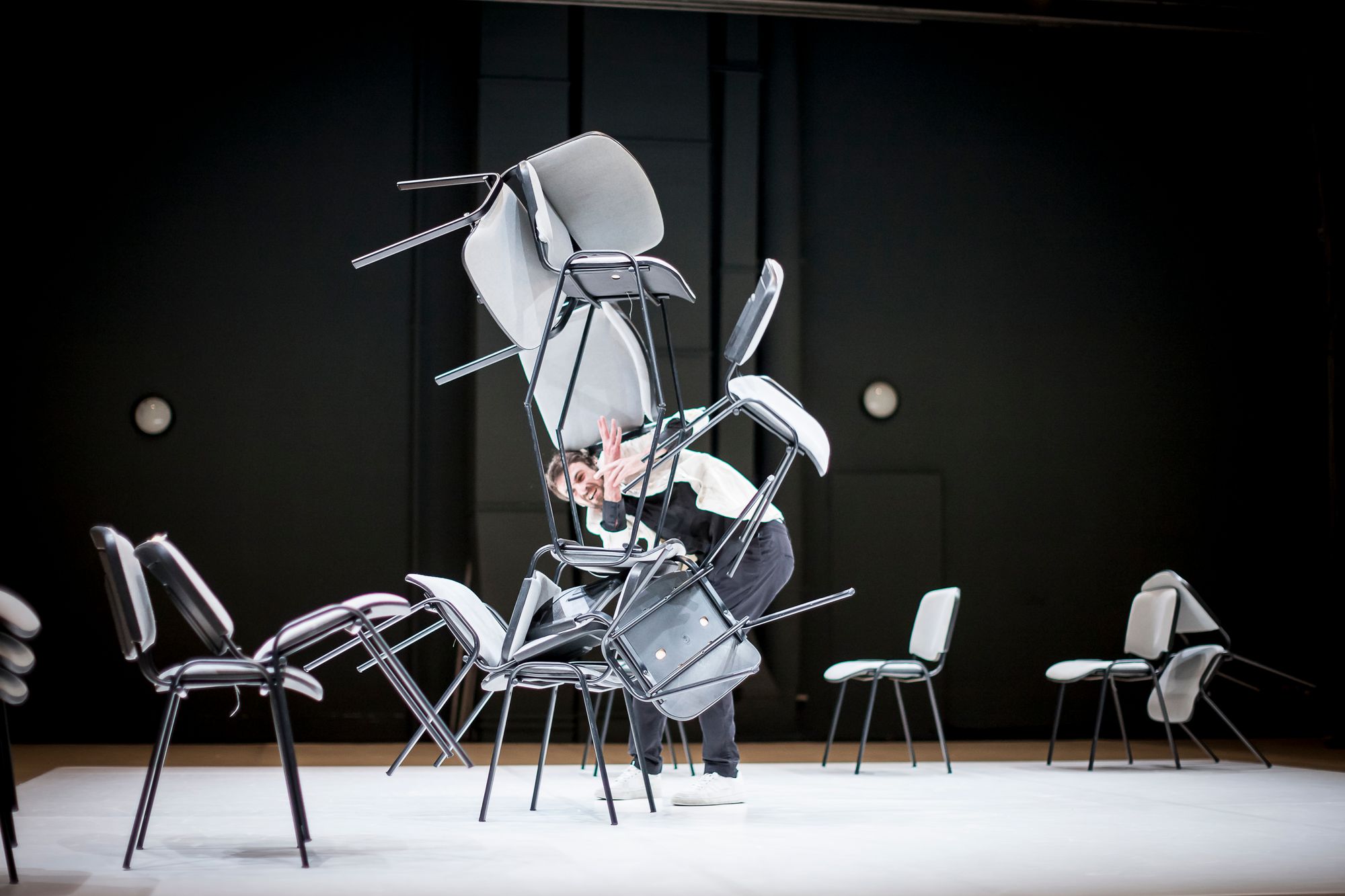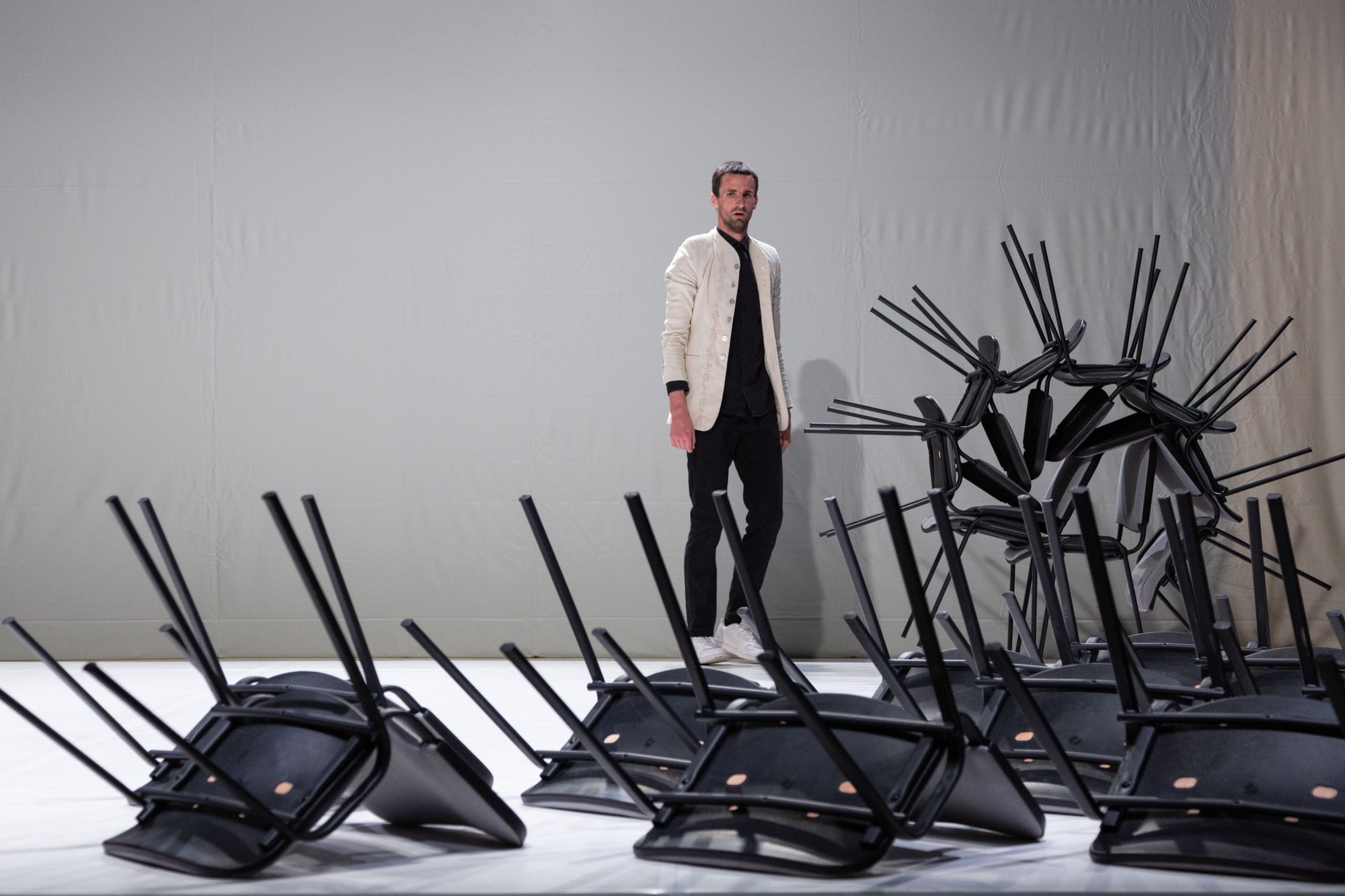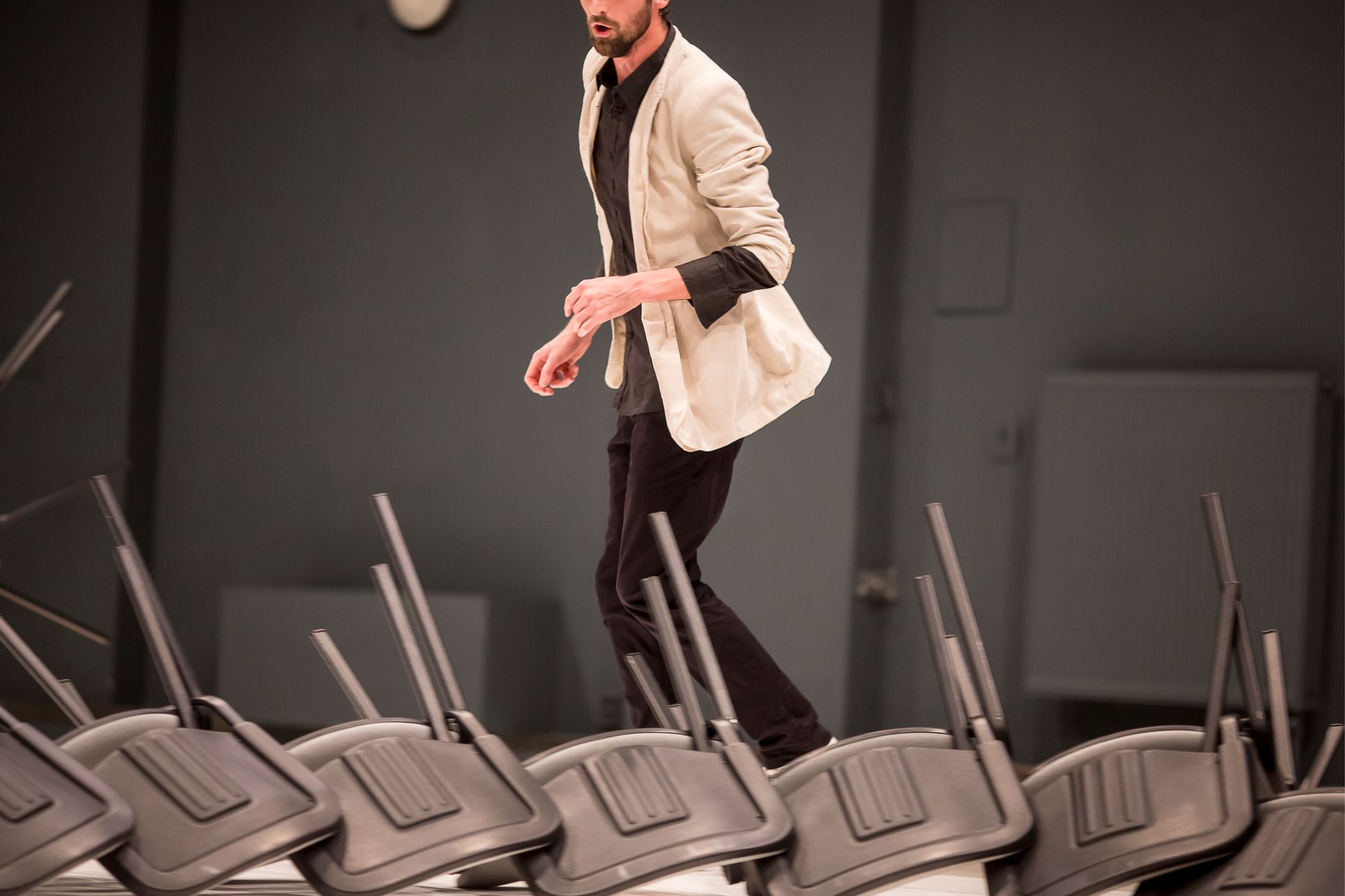What do chairs really want?¹

Our human wishes and desires dominate our relations with inanimate others that surround us. How can we rethink and design anew the world, so domination may give way to more care-based models of living together with objects? In PLI, Viktor Černický employs circus and dance to tease some possible answers.
Reflections from attending PLI at CircusDanceFestival (DE) 2023.
At first glance, PLI, the solo performance by Czech artist Viktor Černický, announces a minimalist setting with, quiet and austere aesthetic, dominated by a white backdrop and a white stage. The piece grows to be complex and gripping, as the artist progressively engages with the chairs. He stacks them two by two, he lines them up, and he stacks them in tall constructions to the point of imbalance. The material qualities of chairs, their design and function, as well as cultural and social narratives around these objects are teased out by Černický in a clever play with balance, expectation, and humour.
From start to end, Černický is never still. His initial limping across the stage turns into skipping, then morphs again into a constant tap dancing. His shoes squeak on the marley floor, splicing into the tapping rhythm. From the sonic elements alone, one can track the artist’s trajectory through space.
The controlled, choreographed, and constant movement is titillating to watch; the delicate jolts of the artist’s body undulate on stage and prolong slightly the time he takes to traverse the minimalist world he inhabits. The audience might be forgiven for desiring narrative: Who is this character, and why does he do what he does? Why does he move only by tapping and skipping? What drives and pushes his choices?

Soon, however, it becomes clear that it’s not the “why” we are meant to focus on, but the “how.” How does he inhabit the space in which he finds himself? How does he approach his own body relative to the inescapable human condition where movement equals survival? How does he approach the chairs – the only other physical presence on stage? How does he manifest his human will and agency on these inanimate others? PLI explores these points while avoiding moralistic positions.
Whereas the performance invites ethical consideration, it also maintains a strong poetics in its staging of human-object encounters. The act of stacking objects is not just mechanical, but also artistic. The artist challenges himself to stack pairs of chairs in ever-new ways. When stacked, the chairs lose their functionality, but gain aesthetic qualities. We see their beauty, symmetry, and pleasant shapes – yet we would not be able to use them as chairs. The mundanity of the chair is here circumvented, and the dichotomy of “functional/aesthetic” object is challenged: an object is never only one thing.
Definitions and taxonomies are obsolete; what we need, in order to have more care-based relations with the non-human, is presence and awareness.

Between the ethics and poetics of Černický’s encounter with chairs, affect is central. At times, Černický’s controlled rhythm reads as automated and uncannily inhuman. But he nonetheless plays with this device to show vulnerability and acute sensitivity. When the stacked chairs seem to fall without human control, the tapping rhythm intensifies in speed, communicating alarm and panic. We are invited to empathise with Černický and to wish for what he wishes: that the chairs stay stacked. The emotion here is what creates a whimsical kinship between the audience and the character; humour navigates between absurd and situational, as perfectly timed physical comedy traverses the entire performance.
Tension builds as Černický attempts one last stack involving all 22 chairs. The artist climbs the unstable stack, using his own body weight to anchor it while he carried the last chair to the top. In the same scene, as the stack leans forward towards its fall, Černický pushes back several times, until the stack is balanced and still again. Taken by surprise, his own tapping movement becomes more agitated as if to make up for the sudden stillness of the objects.
PLI is a generous playground for thought-provoking exercises, as well as for whimsical episodes and humorous connections. Černický’s sculptural structures are reminiscent of Ai Weiwei’s 886 stools in Bang, and his architectural zeal connects with Doris Salcedo’s 1550 chairs crammed between two buildings. Černický’s unique exploration of movement, stillness, and rhythm enriches this lineage.
- Title inspired by WJT Mitchell’s article What do pictures really want?

